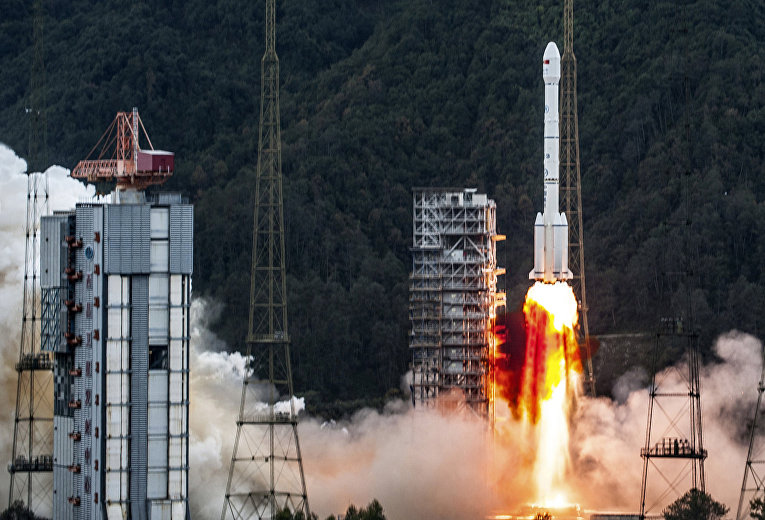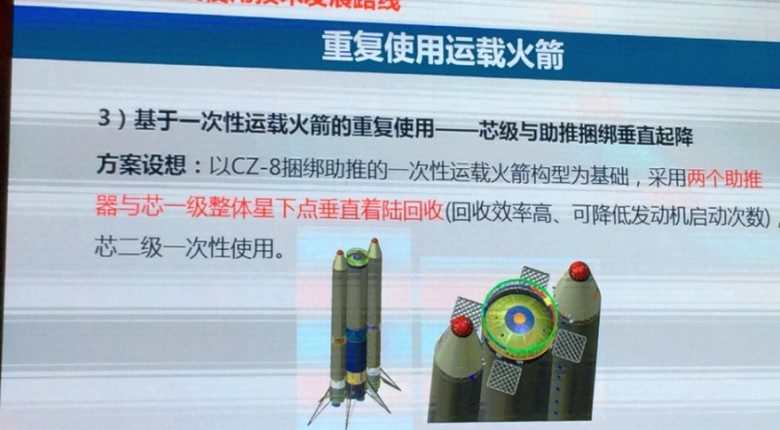China creates a return step on the model of Falcon 9

The SpaceX company declares that the reusable returned rockets allow to reduce the price of starts. It is impossible to verify these statements, but the understanding that this is true is growing. Although Russia at first was skeptical of such carriers, but now it is also leading the development of returnable steps. For example, RSC Energia is calculating the opportunity to make reusable prospective Soyuz launch vehicles. Center them. Khrunichev resumed work on the project to create a stage for the Angara-1.2 rocket, capable of returning to Earth, for its repeated use. The development is also conducted by the State Rocket Center named after Academician V.P. Makeev (Miass), one of the largest research and design centers of Russia for the development of rocket and space technology. In early 2018, rumors appearedon the resumption of the project KORONA (Space single-use rocket, single-stage carrier of vehicles), which can bring about 7 tons of payload into the supporting orbit, and then return with a vertical landing on Earth.
Neighboring China is also actively developing the space program, and in terms of creating missiles with a return stage, it may even be ahead of Russia for several years.
April 24, 2018 at a symposium on the commercial development of space in Harbin made Lech Long (Long Lehao) from the Academy of Launch Vehicle Technology of China (China Academy of Launch Vehicle Technology, CALT), reports SpaceNews site.
The Chinese design engineer said that development of the Changzheng-8 launch vehicle (Long March 8) with a reusable first stage is currently underway. The first test launch can take place already in 2020.
One of the attendees of the symposium photographed a slide from the Lejoo presentation. The slide shows a part of Changzhen-8, which will include a return stage.

Slide from Long Lehao's presentation at the China International Symposium on Commercial Space Exploration, April 24, 2018. Photo: Sina Weibo / Spaceflightfans
It was planned that the Changzheng-8 launch vehicle would be able to output a payload of up to 4.5 metric tons per 700-kilometer sun-synchronous orbit for both government and commercial launches, including competition in the global market.
University of Aeronautics and Astronautics Beykhan in Beijing, Huang Jun (Space), told SpaceNews that Changzheng-8 adapts existing launch vehicle designs to realize SpaceX's Falcon 9 vertical landing.
The first stage of Changzhen-8 is based on the design of the new-generation Changzheng-7 rocket, with a diameter of 3.35 meters. The second stage is based on the stage "Changzheng-3A"with an engine powered by a cryogenic fuel pair, liquid hydrogen — liquid oxygen. In addition, two solid-fuel boosters will be used in the rocket, probably based on Changzheng-11 . The first stage will land vertically on the engines, and rocket boosters, apparently, on parachutes, like the accelerators of the American shuttles.
According to the professor, for the first stage, Changzheng-8 will refine the YF-100 rocket engines, which now in Changzheng-7 are working on a mixture of kerosene and liquid oxygen. At the time, these engines, apparently, were modeled on the basis of the Soviet RD-120.
China is not the first time considering the possibility of launching the return stages. Previously, the Aerospace Science and Technology Corporation (CASC), the main contractor of the Space Program of China, tested parachutes for the return of the steps. Last year, experts from the Shanghai Academy of Space Flight Technology (SAST) announced plans to adapt Changzhen-6 to a reusable first stage by 2020s. The work in this direction is also carried out by the private company Linkspace.
In the long term, the CASC recently published a roadmap, according to which the re-use of all launch vehicles is envisaged by 2035.
In addition to cheaper start-ups and increased competitiveness, the technology of return stages will help alleviate the problem of rocket debris in populated areas near three Chinese space centers.
